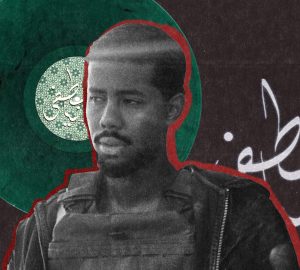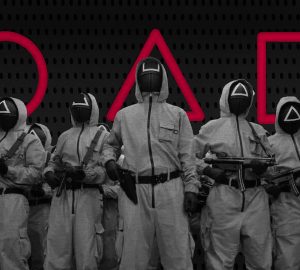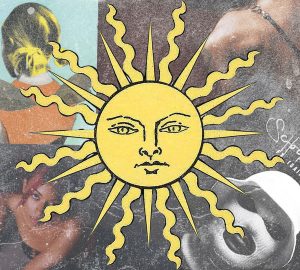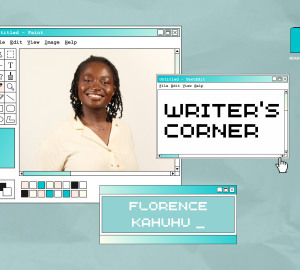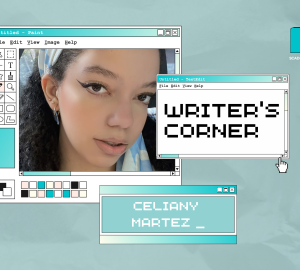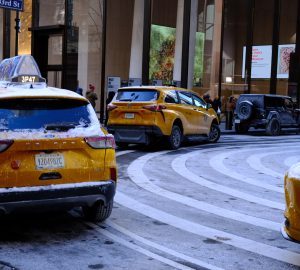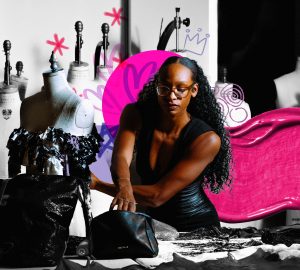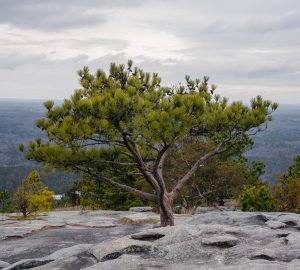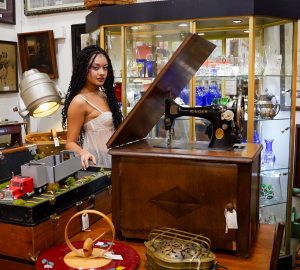Headphones on, music blaring, I sat tight-lipped and anxious; the only writer in a room full of glaring fashion students, all of us awaiting Professor Sarah Collins for History of Fashion. As much as I wanted to keep my head down, I am a people watcher through and through, so I took in my subjects: a student with skunk-dyed hair and cybersigilism tattoos cascading perfectly down their arm, another with a Stanley cup and Prada sunglasses resting atop her head. As I was taking in my surroundings, the door opened, and a model — yes, a model, plucked straight from Vogue Runway — strutted her way into the classroom with thick fur boots, denim shorts, and the aura of someone you’d discover on a “cool girl” Pinterest board. It’s rare to find someone like that, with such confidence that it shakes the rest of us slightly to our core, but there she was: Rebecca Zaizay.
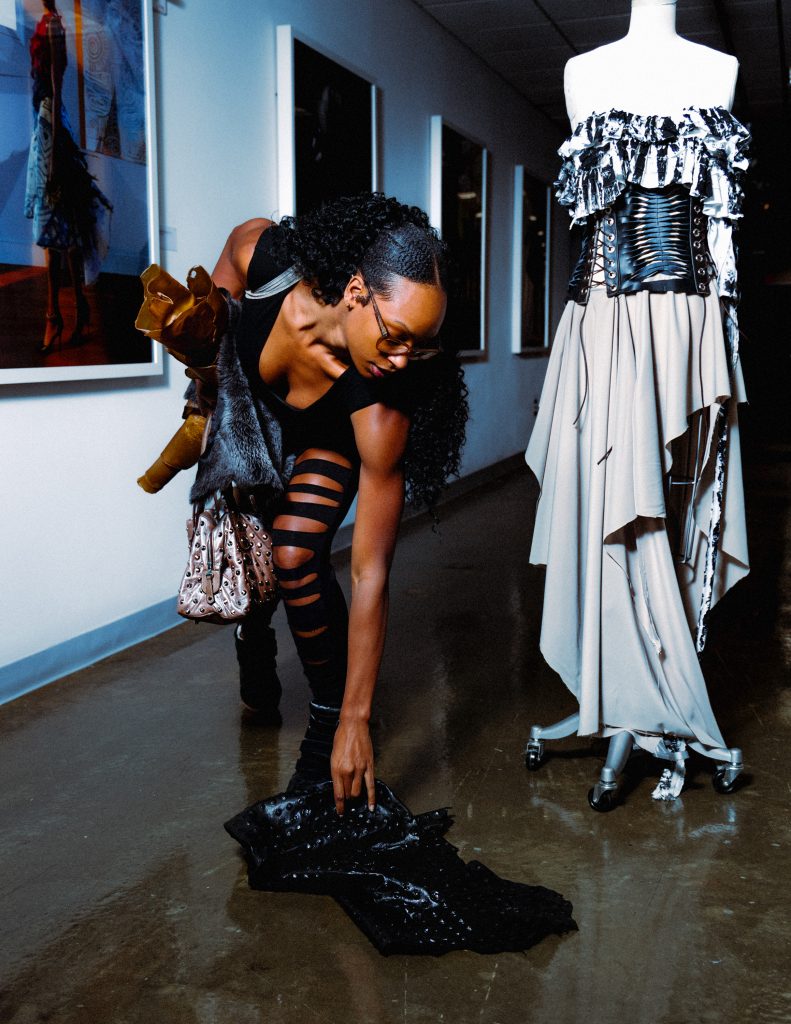
Photo courtesy of Halahna Sewer.
Born in Newark, New Jersey, just a quick train ride away from NYC, Rebecca is — at her core — a northern girl. With family in Brooklyn, she was in and out of the city for the first five years of her life. It was here where her love of fashion began. Zaizay’s father, Augustine, was a lover of fashion himself. With a garage full of shoes and a habit of shopping sprees, he would make Rebecca try on various outfits and “model” for him, walking the narrow hallway as if it were a runway, snapping shots all the while.
After her time in Jersey, Rebecca moved to Loganville, Georgia, residing with her mom, Gertrude, and sister, Ciania. A few years after that, the family was up and moving again, this time to the great big state of Texas. In just a few years, Augustine and his brother would show up to Rebecca’s high school graduation in pink and teal suits. In her world, this was nothing out of the ordinary.
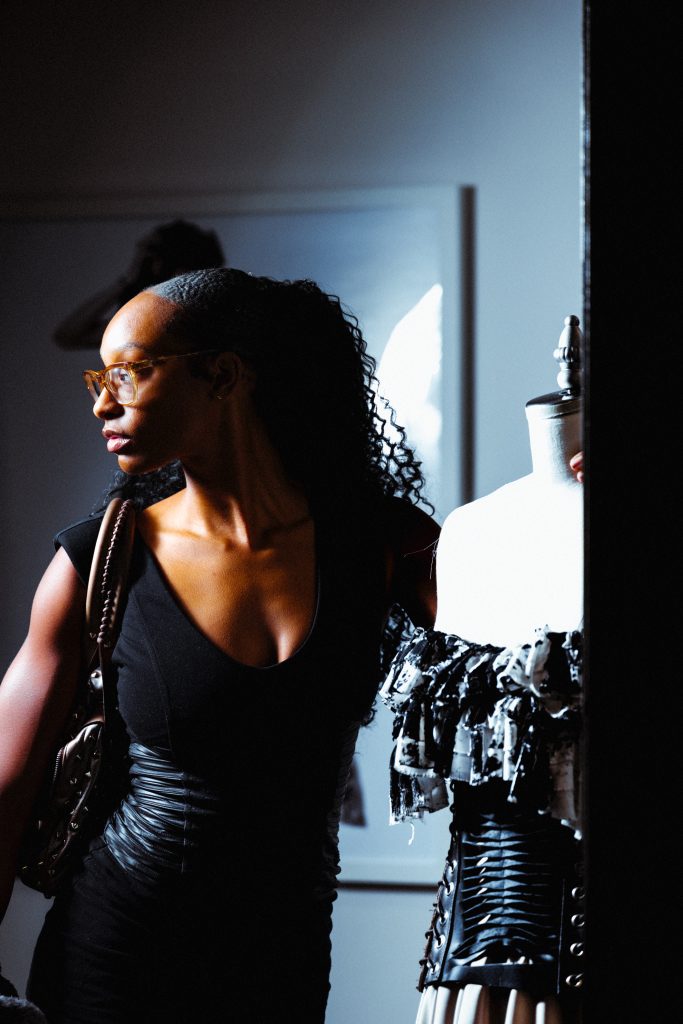
Photo courtesy of Halahna Sewer.
Despite attending one of the most diverse high schools in northern Texas, Zaizay felt the shift of discrimination. “My family is Liberian and Lebanese, so when people ask me where I’m from, I want to say Liberia, but I wasn’t born there. Although we lived in Texas, everything about my life was Liberian inside the home… I had never had an American Thanksgiving until last year when my sister and I tried to make an American Thanksgiving by ourselves.”
Zaizay’s ancestral heritage directly impacts her brand. “Both of my parents have scarification on their bodies,” she explained, showing me a textured leather fabric that mimicked the imprint of circular scarring. In many Liberian and other West African tribes, scarification — also known as cicatrization — is a cultural practice that signifies one’s achievements in life. The body is permanently marked by cutting or burning, which creates keloids, a type of protrusion on the skin’s surface. For Zaizay, weaving this kind of cultural practice into her design cosmology allows her to honor her roots while crafting a contemporary narrative of identity. The Zaizay brand converges tradition and self-expression in a modern, fashionable landscape.
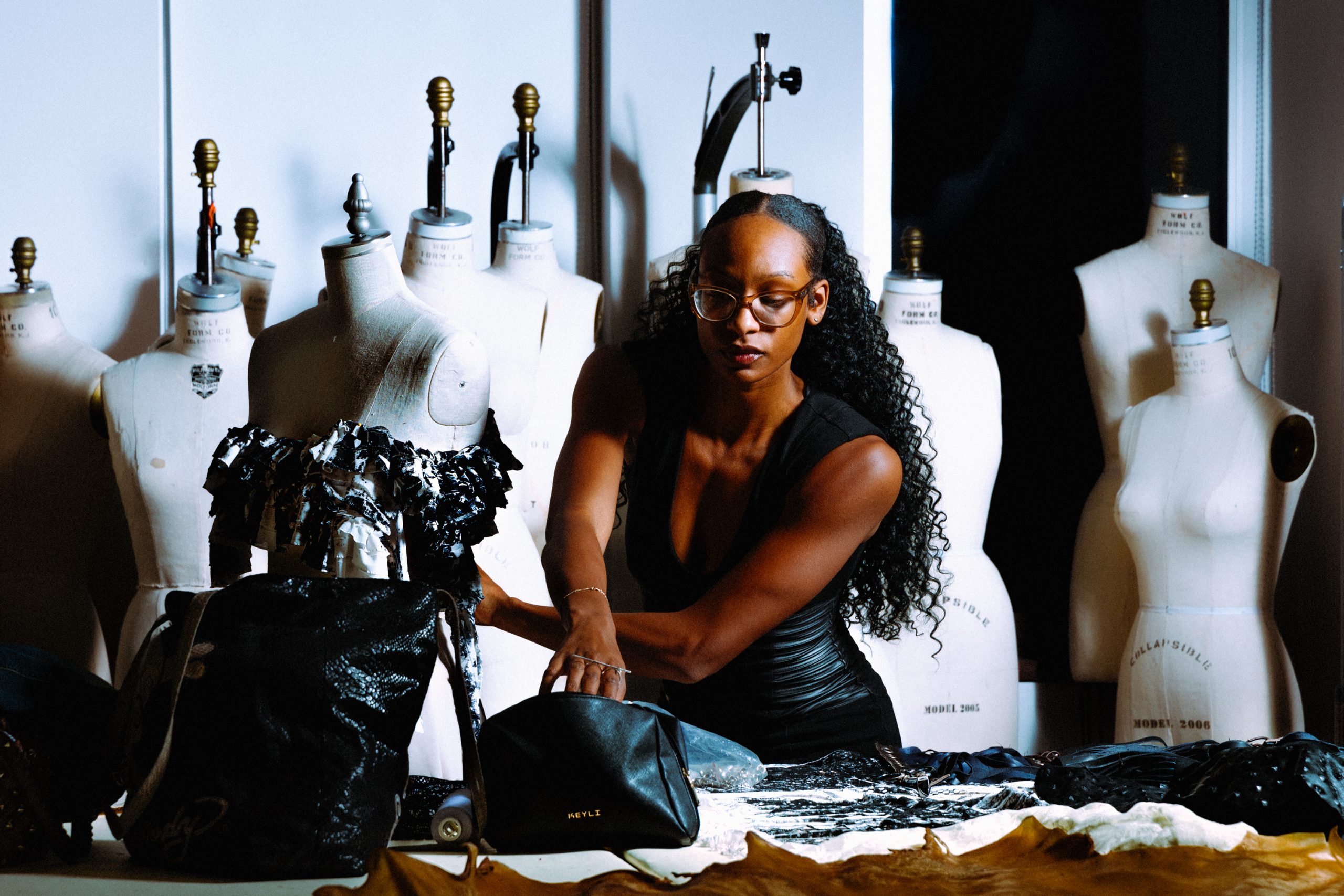
Photo courtesy of Halahna Sewer.
Months after our initial classroom encounter, I sat with my subject and learned about her life as the Israeli invasion of Lebanon unfolded on the other side of the world. We were on the fashion floor of SCAD Atlanta’s main building, just a few rooms down from where I first met her. She was working on her senior collection: an achievement as important to a fashion design major at SCAD as lighting the torch at the Olympic opening ceremony. We were gathered here to discuss modeling, designing, and walking the runway, not to divulge in political or societal discourse or discuss the tragedies occurring in one of her home countries. Somehow, though, our conversation continuously led to these topics, and she elucidated how the weight of these global conflicts often finds a way into her creative process.
Lebanon and Liberia are two places that have been heavily affected by colonization and catastrophe since their civil conceptions. In Liberia, the country where Zaizay’s parents emigrated from, two civil wars broke out over a fourteen-year period. The First Liberian Civil War, which lasted from December 24, 1989, to August 2, 1997, and the Second Liberian Civil War, spanning from April 21, 1999, to August 18, 2003, left over 250,000 people dead in their wake. Even now, in the year 2024, Israel is expanding its bombing campaign across Lebanon, killing 1,400 — including civilians and paramedics — in less than two weeks. Zaizay’s senior collection is inspired by these origins. “I want to highlight my heritage and uplift my people… I think it’s fascinating that each person in my lineage survived just so I could be here today… My dad and his brothers were captured by rebels. My mom had to come in and rescue my grandmother from a refugee camp because the rebels were attacking. So, I thought, let me merge these aspects of my life in a modern and globalized sense.”
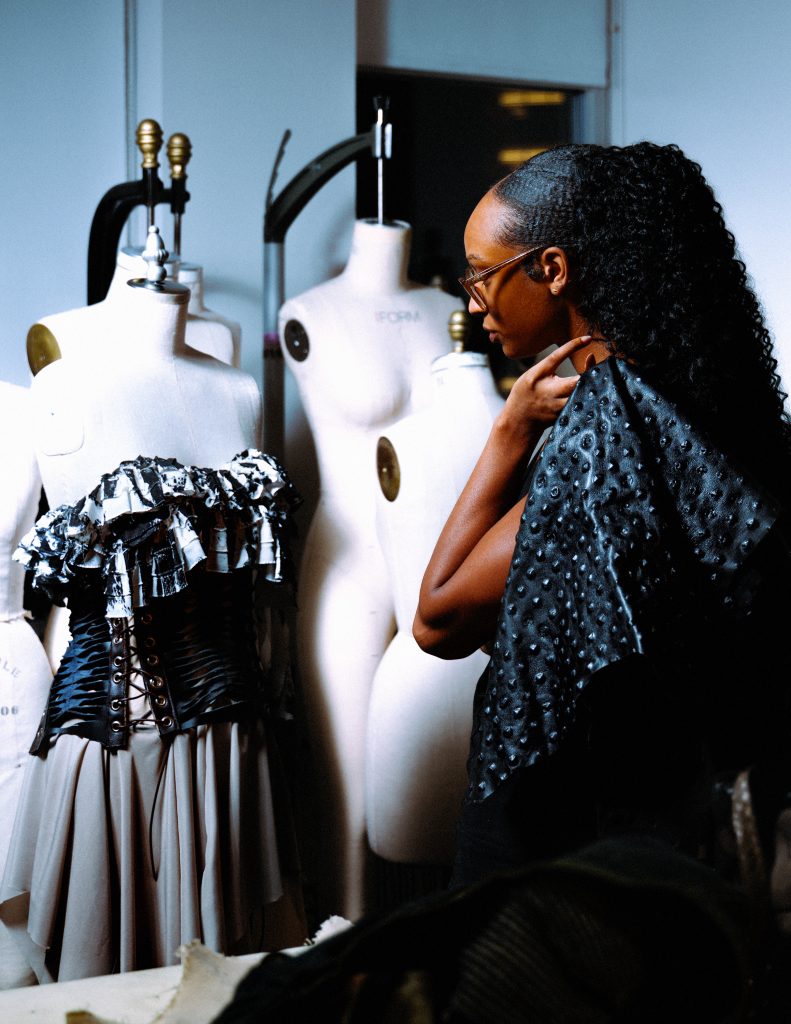
Photo courtesy of Halahna Sewer.
Before the start of her brand or stepping into the world of modeling, there was a time when she was first deciding what she wanted to do with her life and career. “It was 2020. I had so much time on my hands. I didn’t know if the world was ending or not.” Amidst a global pandemic, at just sixteen years old, she was forced to reassess her future plans. She found clarity in fashion design, memorializing the beginning of a journey that would lead to the creation of her brand and her rising career in the fashion world.
“I met my best friend from Texas when we were in middle school. We instantly clicked. We loved clothes, we loved shopping, so every single Friday we would go get pho and spend, like, 30 dollars at the mall. Gradually, it turned into us shopping, then taking pictures, and then becoming more creative. I suggested we start a magazine or something. I got deeper into the entrepreneur mindset and what I wanted for myself. I wanted to be a behavioral biologist because I love science, but then I started thinking: I actually want to make clothes, I want to start a brand. Then, I learned how to make tech flats [two-dimensional drawings of garments required for manufacturing] and built a foundation for my future.”
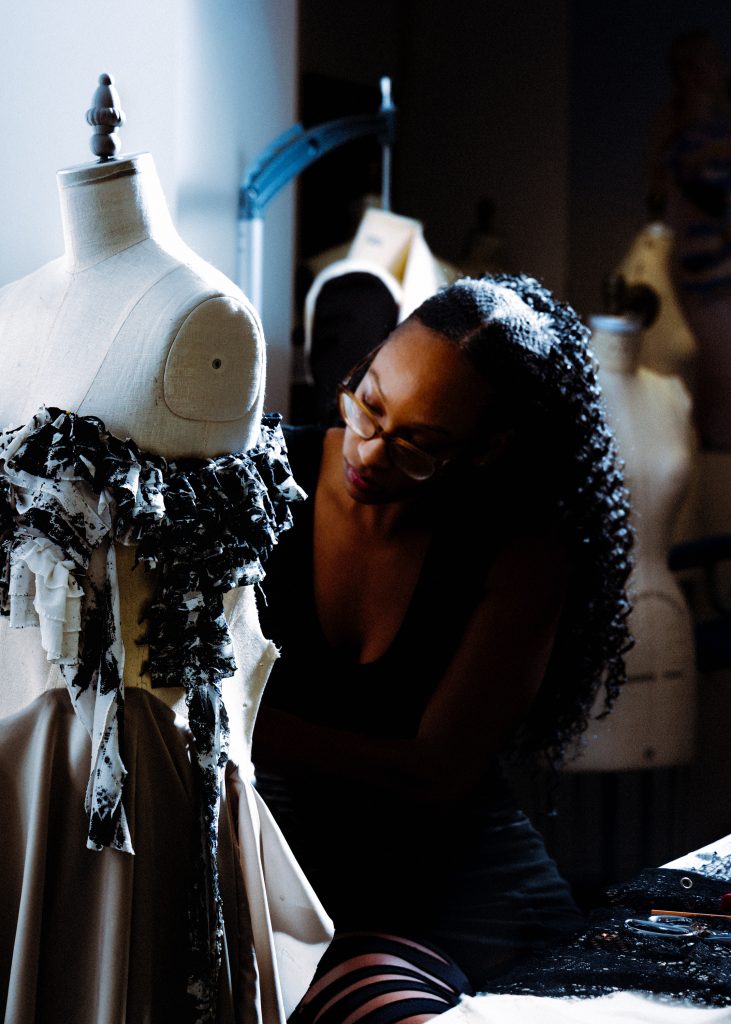
Photo courtesy of Halahna Sewer.
Once her foundation was set, the summer before coming to SCAD, she founded and incorporated her brand: FREE HAV3N LLC. The logo is a West African symbol meaning unity and diversity. “People don’t even need to know where it comes from, but the fact that it could be in so many people’s closet and they don’t even know it’s a Liberian thing… I feel like my people will always be with me and as long as they are, I will always uplift them.”
The collection is also gender neutral in a sense, with “masc” and “femme” distinctions instead of “men’s” and “women’s” clothing. As a queer woman of color, she wants to give a voice to the marginalized.
On top of these accomplishments, her SCAD career harbored even more greatness. She appeared in Vogue on five separate occasions and during her junior year, was featured in an article from The Cut magazine, a New York-based magazine site that covers fashion, beauty, sex, politics, and celebrity. At the end of Zaizay’s freshman year in the spring of 2022, she was selected to model for SCAD’s annual fashion show. Never having walked a real runway — just the metaphorical one in her New Jersey home — the iconic Miss J, judge and runway coach of America’s Next Top Model for 18 seasons, coached her to quintessence.
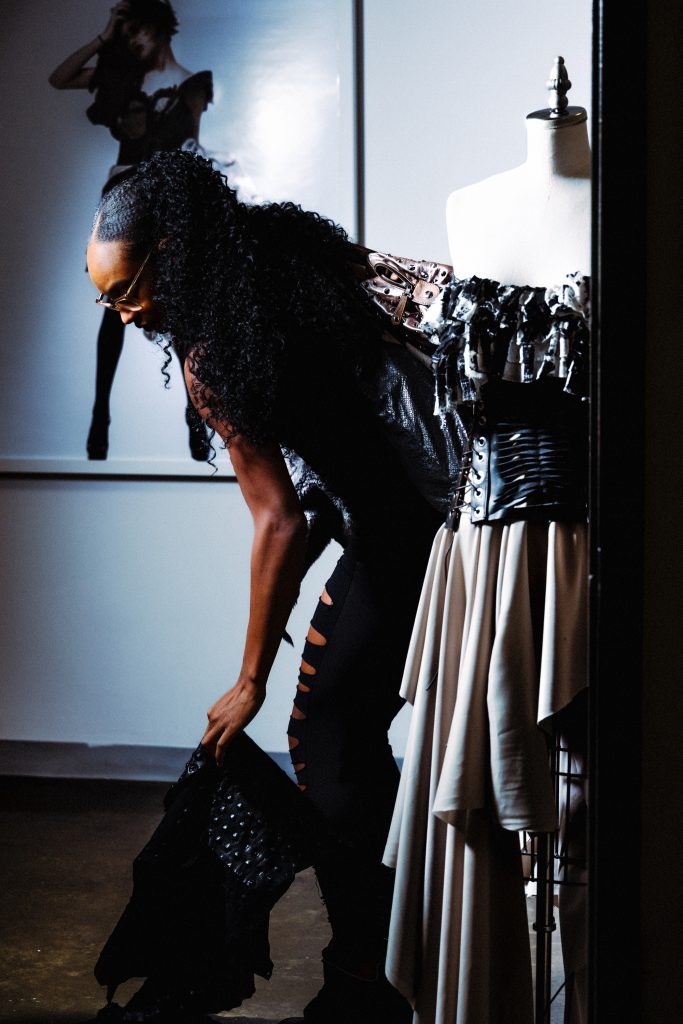
Photo courtesy of Halahna Sewer.
As a gymnast of 15 years, Rebecca was comfortable with constructive criticism, so harsh comments only pushed her to do better. Once she walked the show, Zaizay — rather an image of her walking the runway from a secret photoshoot the night before — appeared in Vogue for the first time. Once the editors hit “publish,” she thirsted for more: more critiques, more coaches, more catwalks. She even expressed her wishes for Coco Rocha, the Canadian model who took over the title of coach for the next two runways: once in Atlanta and most recently in Savannah, to be fiercer with her commentary.
Looking toward the future, Zaizay is excited about the photoshoots, styling, models, and creative direction, but there is some uncertainty regarding the upcoming seasons. For her final year at SCAD, it is unclear if Zaizay will be allowed to walk in the fashion show. If her designs make it through the multiple stages of critique and the final jury show mandatory for her department, then three pieces of her collection will be showcased in the 2025 SCAD Fashion Show — ending her legacy as a SCAD model. However, this doesn’t upset Rebecca. Rather, she is hopeful for the future of her brand. Collaborating with Payton Smith, a fashion marketing and management major, for the post-production facets of her collection Zaizay states, “I’m really grateful that I know and have met the people that I have met and kept those genuine connections who love art. Now I see the benefit of surrounding myself with like-minded, ambitious people. There is a mutual level of respect for each other’s craft.”
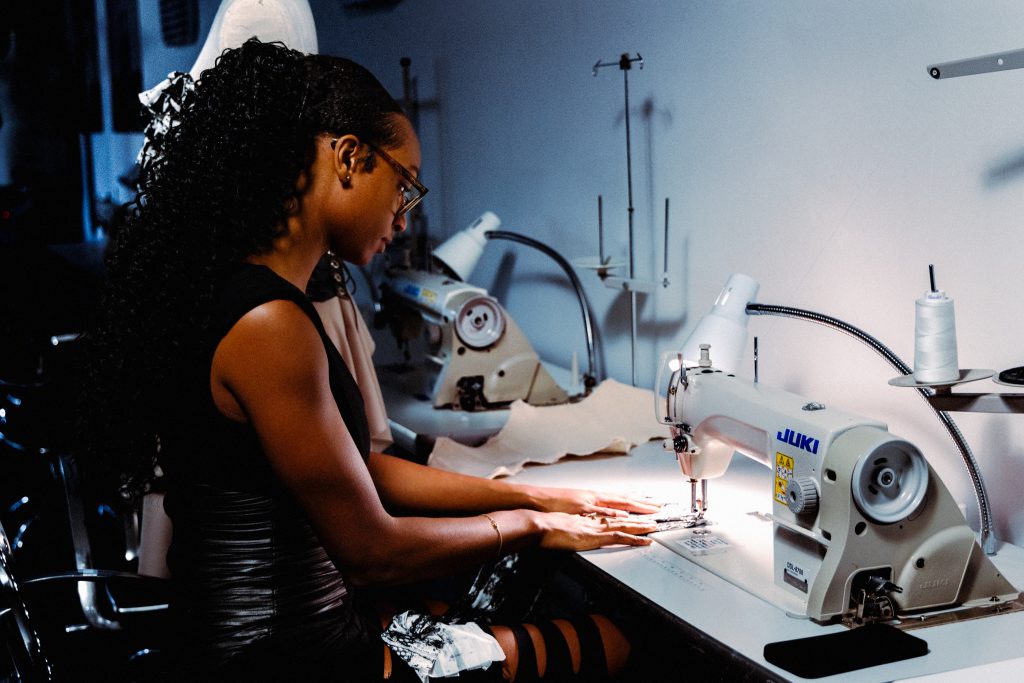
Photo courtesy of Halahna Sewer.
Balancing a full-time job, college courses, photoshoots, interviews, and garment creation, Zaizay tirelessly assembles her brand narrative, one thread at a time. While fashion houses like Alexander McQueen and Chanel rely on teams of creatives and developers to achieve such feats, Zaizay fearlessly takes on her senior collection solo, cutting, sewing, and pinning long into the night.



